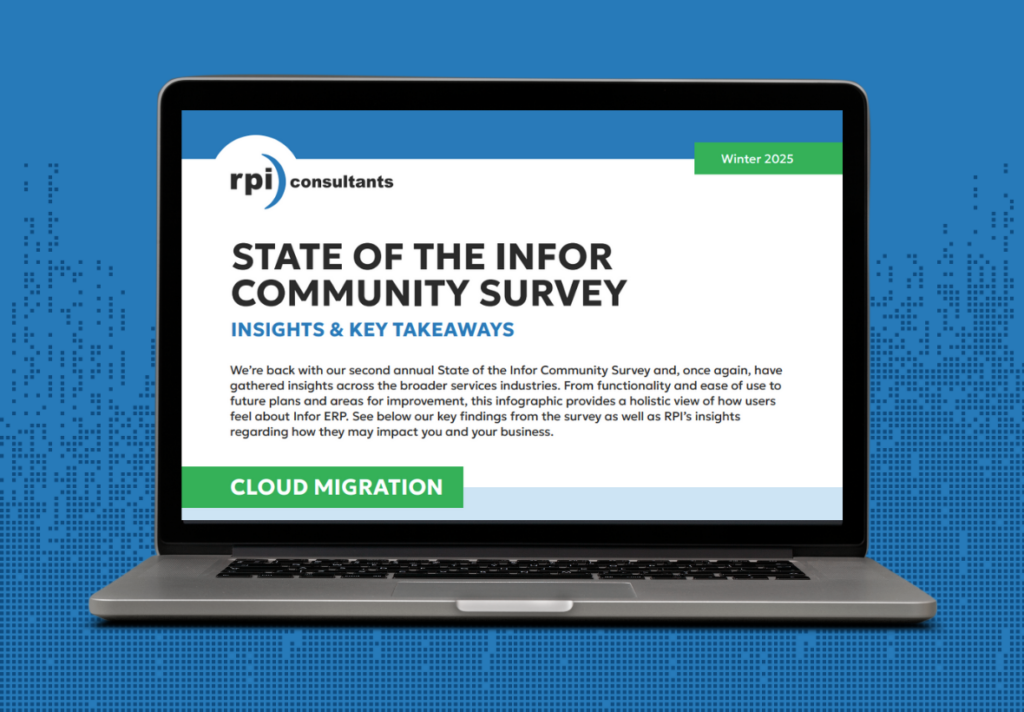ERP implementations are often met with high hopes and expectations. However, the road to a successful deployment is not without its challenges. In fact, 55-75% of ERP projects either fail completely, or simply don’t meet their intended objectives.
Misalignments, unexpected surprises, and delays often arise due to a gap between what organizations think they’re purchasing and the reality of what’s actually delivered.
These challenges can be minimized, though, with a little due diligence, the right preparation, and a proactive approach. By addressing potential gaps early, you can set your ERP project up for success and avoid unnecessary frustration down the road.
In this article, we’ll cover four essential steps that will help you navigate the complexities of ERP implementation readiness, and lay the foundation for a smooth, successful project outcome.
1. Contract Reviews: Clarify What You’re Buying
One of the first steps to ensure that your ERP implementation is successful requires a thorough review of the contracts you’ve signed. ERP projects usually involve a range of vendors, each providing distinct solutions and services for different areas of the system.
An ERP contract should clearly define the parameters of the relationship between the customer (that’s you), the vendor, and any third-party partners. Without clarity in your contracts, critical functionality, service, and support gaps may not be discovered until the implementation is already underway.
To avoid gaps and establish ownership for each component of the project, we recommend taking the following action:
- Map vendor roles & responsibilities: It’s essential to set out the roles and responsibilities of your implementation partner, core software vendor, and any third-party providers from the beginning. Ensure each party’s scope is clearly articulated and documented to avoid misunderstandings.
- Specify functionality in your RFP: When preparing your RFP (request for proposal), be as detailed as possible about your requirements for each involved party. This is when it pays to have a well-documented, reports, interfaces, conversions, and enhancements (RICE) inventory to reference throughout the engagement as it will play a critical role ensuring nothing about your system is left out.
- Understand integration points: Integration refers to how well an ERP system can communicate with any additional software and systems used. Pay close attention to how third-party solutions—such as tax engines like BSI Tax Factory or treasury management tools—will work with your ERP system.
Having detailed, well-reviewed contracts ensure that all components are accounted for and that there is transparency around who is responsible for what. And taking the extra time to verify the contents of your contracts can help you avoid costly surprises later in the process and align your expectations with what’s being delivered.
2. Application Readiness: Avoid Surprises
A major source of friction during ERP projects often stems from overlooked or improperly provisioned applications. Critical modules and systems, such as accounts payable automation or specialized database requirements—can be missed during the planning phase, leading to costly delays or functionality issues down the line. So, be sure to:
- Verify provisioning: Ensure that essential applications, like payroll management systems (BSI, Symmetry, I-9 for payroll), are provisioned and available for use. This applies to specialized tools that may not be included in your core ERP system but are necessary to meet specific business needs.
- Check infrastructure for modules with unique requirements: Modules like Expense Management (XM) may require separate databases or additional infrastructure. Make sure these are set up and ready for deployment as part of your planning phase.
- Engage subject matter experts: Involve subject matter experts (SMEs) in your planning process to identify any overlooked applications or tools that are critical to your operations. For example, bringing in finance SMEs could help you identify accounting features or compliance requirements that are critical for your industry and not part of the standard out-of-the-box functionality of your future state ERP. Having them weigh in early can help you implement any stopgaps identified.
Proper provisioning and preparation at this stage can save you significant time and effort during the implementation process, preventing delays and helping your project stay on track.
3. Technical Readiness: Build the Right Foundation
The technical foundation of your ERP system is critical to its success. A well-planned tenant strategy and environment setup can mean the difference between smooth testing/go-live phases and a project riddled with issues.
Without proper technical readiness, you risk overall project success and frustration, so don’t skip these crucial steps:
- Align integrations early: Identify all key systems that need to connect with your ERP, such as finance, HR, or payroll, and confirm integration points upfront. Involve IT and vendors early on in the process to validate data flows, timing, and dependencies. Alignment now minimizes costly surprises later.
- Plan for testing needs: Develop a tenant strategy that is tailored to your application mix and testing requirements. For example, payroll parallel testing may require dedicated environments to ensure that your processes are accurate and working properly before going live.
- Verify environment availability: Ensure that all necessary environments (for example: development, test, and production) are set up, accessible, and configured before project milestones begin. Early technical setup ensures that there are no interruptions during critical phases like testing and go-live.
Technical readiness is not a checklist item, but a key step for ensuring that your system is configured to support the complexities of your business processes.
Having a strong foundation will help avoid disruptions and delays throughout the entire implementation as well as provide your teams with the tools for exploring new feature functionality before pushing them into production.
4. Team Readiness: Aligning Expectations
Even with a rock-solid system and proper technical setup, your project can face delays if your team isn’t aligned on expectations. Miscommunication regarding project scope, roles, and responsibilities can derail progress and cause unnecessary frustration.
Some ways to align your team:
- Review & document project scope: It’s crucial that all stakeholders review and align on the project’s scope. Go through relevant RFP responses, statements of work, and detailed scope documents to ensure everyone is on the same page. Take the time to identify out-of-scope areas and document them in a RAID (Risks, Assumptions, Issues, Decisions) log for clarity.
- Foster collaboration early: Engage your internal teams and external partners in regular planning sessions. Use these sessions to clarify roles, address potential risks, and align on goals. Early collaboration will help ensure that everyone knows their responsibilities, reducing the chances of miscommunication and delays.
- Prepare for change: Change is part of every project, whether it’s new tools, roles, or processes. And getting ahead of change resistance early can support greater user adoption and overall ROI on your ERP. Help your team adapt by planning ahead. Communicate changes clearly, offer support and training, and identify change champions to guide others.
Alignment is key. When your team is on the same page, your project can proceed confidently and smoothly. Clear communication, shared understanding, and cooperation will help prevent roadblocks.
ERP Implementation Readiness with RPI
ERP implementations aren’t doomed to fail because the systems themselves are flawed—they fail when there’s a gap between expectations and execution. By focusing on clarity, preparation, and alignment from the very beginning, you can bridge that gap and set your organization up for success.
At RPI Consultants, we’ve worked with organizations across industries to navigate these challenges. Whether you’re just starting a new ERP implementation or planning an upgrade, our team brings the expertise needed to transform ERP promises into real, measurable outcomes. We’re here to ensure your ERP project is successful from day one.
Ready to make your ERP implementation a success? Contact us to learn how we can help you bridge the gap between expectations and reality.
Discover ERP Success With RPI


